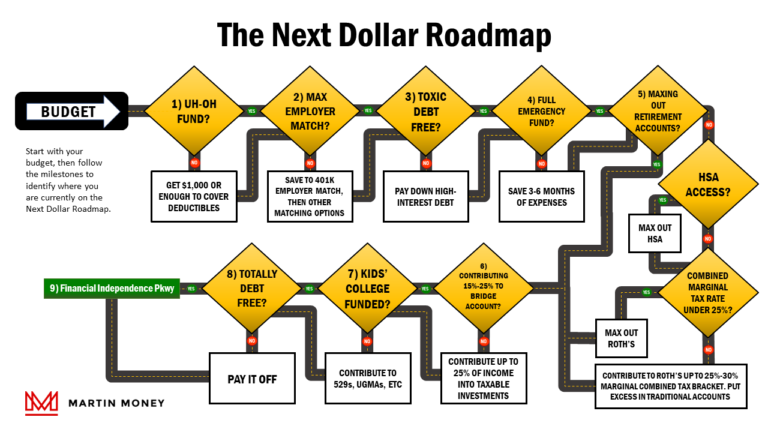What Percentage of Americans are Financially Independent?
Based on the methods we used to evaluate the net worth that the average American should have to support themselves without an earned income, fewer than 10% of American households are financially independent.
When I first started researching this topic, I quickly realized this wasn’t going to be as simple as a quick visit to treasury.gov for some stats that I could simply regurgitate and add some commentary to.
To begin, I found that there are two definitions of “financial independence” that people are curious about.
The first definition is for young people trying to understand what the normal age is to emerge from the financial support of their parents.
We’re not going to focus on this topic, but on average millennials don’t complete the launching process until age 31. Our post about student loans seems relevant to this topic.
However, for this post, the definition we are using deals specifically with the point in life when people have accumulated enough wealth to no longer need earned income from a job or business they operate.
And this is a difficult thing to define because it depends on multiple factors.
Is It What You Have or What You Spend?
To begin, it’s not as simple as just grabbing a net worth value out of the air and running it through census information to see how many people fit the criteria.
I doubt you need an explanation, but just in case you’re a little fuzzy on why, consider the difference between a $1MM net worth in Manhattan, Kansas vs a $1MM net worth in Manhattan, New York.
One would have a much easier time getting by on a million bucks in Kansas, but geography is just one example.
- How do factors like family size, health, travel habits, and housing all impact this?
- What if you don’t receive social security in retirement or you retire years before you can file for it?
- What other sources of income will you have to supplement your lifestyle?
There’s a lot to consider.
The good news is all of these factors share the characteristic of being expenses in their various forms. So, if we know how much Americans are spending, maybe we can pinpoint how much they need.
I feel like I’m beating a dead horse here, but if you’ve read our other posts about financial independence, you are probably beginning to see a theme.
In case you’re not following, I’m talking about the importance of understanding the impact expenses have on the likelihood that your nest egg will carry you all the way through retirement.
So often, we fall into the temptation of focusing on net worth alone when it is only one part of the formula.
So, How Much Do We Spend?
With this in mind, let’s consider what Americans spend on average.
According to Zippia.com, the average American household spends $5,577 monthly, equating to an annual spending of $66,924.
Using the commonly cited 4% rule as a safe withdrawal rate, we can multiply $66,924 by 25 to arrive at a required nest egg of $1,673,100.
But Wait, There’s More…
Before you panic, I’m not suggesting you need a $1.67MM nest egg to retire.
First, we’ve already pointed out the impact expenses have on one’s retirement savings. You won’t need this much if you can live on less than this.
We’ve also left out other unearned income sources that would reduce the amount one would need to withdraw from their nest egg for regular income.
For example, if you have an annual pension of $40,000 it would make the task of covering your annual expenses that much easier.
In the average American’s case, it means you’d only need another $26,924 annually or $673,100 total in your nest egg to support your lifestyle.
Because less than 15% of Americans receive regular income from a defined benefit pension plan, we’re only going to consider social security for our calculation.
According to our friends at the Social Security Administration, the average American household (a married couple at least 65 years old) will receive $3,654 in monthly benefits in 2023.
That comes out to $43,848 annually.
The lift to financial independence just got much lighter. This only leaves a gap of $23,076 annually to be made up from personal savings which would require a nest egg of $576,900.
But What About The Years Before I Claim SS?
The earliest you can begin claiming retiree social security benefits is 62, which is what most people actually do.
Not surprisingly, this is also when the average person retires.
So, we don’t really have to make any adjustments to arrive at an average annual expense need.
Now, if you were in a position to retire early and are curious about what you’d need to bridge that gap, you could approach it a couple of different ways.
First, you could just add the number of years preceding your filing date for social security and accumulate an adequate amount of savings to cover that.
Another possibility would be to reduce your expected withdrawal rate, meaning you’ll either have to spend less or save more.
For folks in their 50s, we typically suggest using a safe withdrawal rate of 3% instead of the traditional 4%. In your 40s we suggest 2.5% and in your 30s, 2%.
So, How Many Americans Are Financially Independent?
According to our somewhat scientific calculation, the average American will need $576,900 saved in order to be considered financially independent.
The latest data from the US Treasury was from 2019, but fewer than 10% of American households had this much saved for retirement at that time.
To be clear, this is based on retirement savings, not net worth.
I don’t think net worth is the best way to measure the ability of assets to produce income because one’s home is normally a considerable portion of their net worth.
However, as long as you need a home to live in, it can be difficult to use it to produce income unless you rent out part of it.
Conclusion
I knew going into the research for this post that Americans are not saving very well for retirement. Heck, it’s one of the reasons I started this website.
The irony is it doesn’t take a ton of money to save $576,900.
You can get there in 37 years if you save only $100/month. Double that amount to $200 and you cut the time in half (18.5 years).
It’s not that it’s hard or even complicated, but it does take intentionality.
If you haven’t already started, there’s no better time to get going than now.







